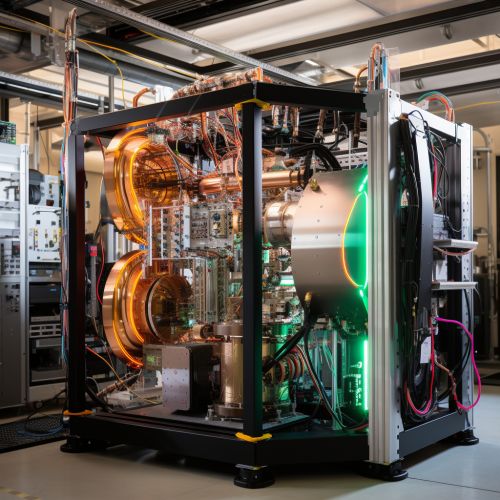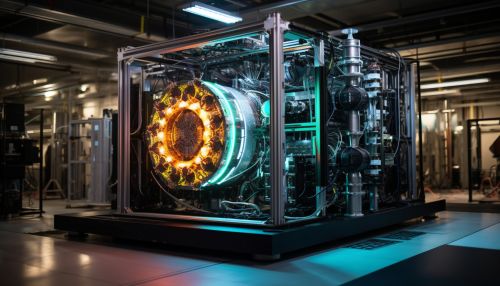Quantum Computing with Quantum Optomechanical Systems in Quantum Science
Introduction
Quantum computing is a rapidly evolving field that leverages the principles of quantum mechanics to process information. One of the promising approaches in this domain is the use of quantum optomechanical systems. These systems couple light (optics) with mechanical motion (mechanics) at the quantum level, opening up new possibilities for quantum science and quantum computing.
Quantum Computing
Quantum computing is a type of computation that utilizes quantum bits, or qubits, instead of the traditional binary bits used in classical computing. Qubits can exist in a superposition of states, allowing them to perform multiple calculations simultaneously. This property, along with entanglement and quantum interference, gives quantum computers their potential for unparalleled computational power.


Quantum Optomechanical Systems
Quantum optomechanical systems are physical systems that couple light with mechanical motion at the quantum level. These systems typically consist of a mechanical oscillator, such as a tiny mirror or a vibrating membrane, coupled to an optical cavity that confines and manipulates light. The interaction between the mechanical oscillator and the light field leads to a range of quantum phenomena, including cooling, squeezing, and entanglement.
Quantum Science
Quantum science is a broad field that encompasses the study of quantum mechanics and its applications. It includes areas such as quantum computing, quantum communication, quantum cryptography, and quantum sensing. Quantum science is fundamentally concerned with understanding and exploiting the unique properties of quantum systems, such as superposition and entanglement.
Quantum Computing with Quantum Optomechanical Systems
Quantum optomechanical systems have several properties that make them attractive for quantum computing. Firstly, they can be used to create and manipulate qubits. The quantum state of the mechanical oscillator can serve as a qubit, with the two states corresponding to different vibrational modes of the oscillator.
Secondly, quantum optomechanical systems can facilitate quantum gates, the basic building blocks of a quantum computer. By manipulating the interaction between the mechanical oscillator and the light field, it is possible to perform quantum operations on the qubits.
Thirdly, quantum optomechanical systems can enable quantum communication between different parts of a quantum computer. The light field can carry quantum information from one mechanical oscillator to another, allowing for the creation of entangled states and the execution of distributed quantum computations.
Challenges and Future Directions
Despite the promise of quantum optomechanical systems for quantum computing, there are several challenges that need to be addressed. These include the need for better control over the quantum states of the mechanical oscillators, the need for more efficient quantum gates, and the need for more robust quantum communication protocols.
Looking ahead, research in quantum optomechanical systems is expected to continue to advance our understanding of quantum mechanics and to contribute to the development of practical quantum computers. In addition, quantum optomechanical systems may find applications in other areas of quantum science, such as quantum sensing and quantum communication.
